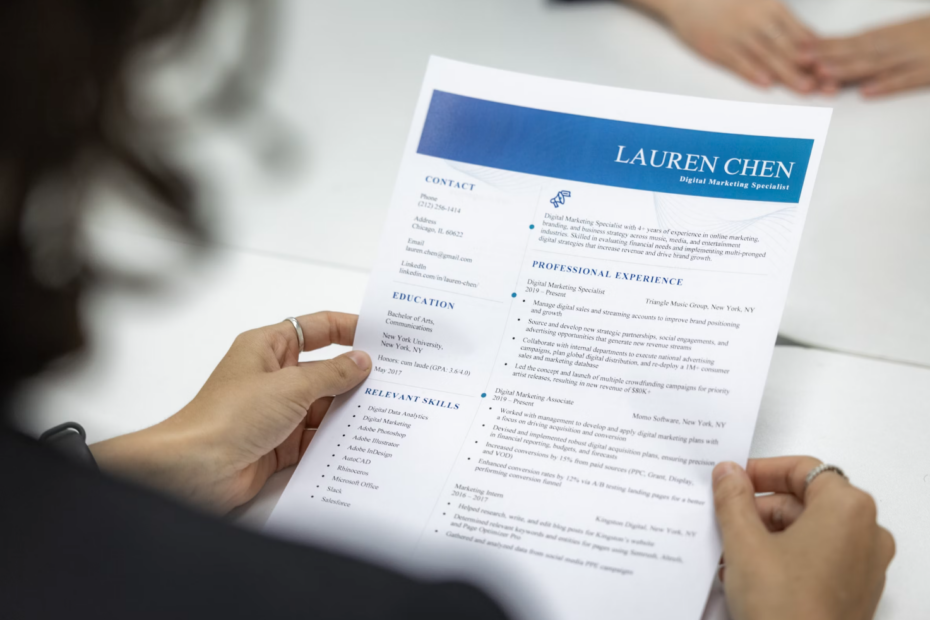Creative or Traditional CV? Here’s What Recruiters Prefer
Crafting the perfect CV can feel like navigating a maze. Should you opt for a sleek, creative design that catches the eye, or stick to the tried-and-tested traditional format? This is a question many job seekers grapple with, especially as industries evolve and competition intensifies. The truth is, the “right” CV depends on multiple factors, from your industry and role to the company culture and even the personal preferences of the recruiter. To guide you through this nuanced decision, let’s delve into what recruiters really look for in a CV and how to strike the ideal balance between creativity and professionalism.
Recruiters receive dozens, if not hundreds, of CVs for a single position. This deluge of applications means that your CV needs to stand out—yet not in a way that’s overwhelming or gimmicky. Traditional CVs, with their clear structure and focus on content over design, remain the preferred choice in fields such as law, finance, and healthcare. These industries prioritise professionalism, precision, and an emphasis on your experience and qualifications. A professional CV template can save you time and ensure your layout adheres to these expectations. Templates like these are particularly useful for roles where creativity isn’t the primary skill being assessed.
Conversely, creative CVs are increasingly gaining traction in fields like marketing, design, and tech. In these industries, showcasing your ability to think outside the box can give you a competitive edge. A well-designed CV that incorporates elements like graphics, colour schemes, or interactive features can demonstrate your creativity before you even land the interview. However, this approach carries risks. If the design overshadows the content or complicates readability, recruiters might move on without a second glance. Investing in a user-friendly CV design tool can help you achieve a polished look without compromising clarity.
One key element to consider is ATS compatibility. Applicant Tracking Systems (ATS) are software tools used by many companies to filter CVs before they even reach a human recruiter. While creative CVs might impress when viewed in person, overly complex designs can confuse ATS software, leading to your application being discarded. To navigate this, you can use a dual approach: a simplified, ATS-friendly version for online submissions and a more visually engaging version to bring to in-person interviews. Tools like a CV file converter can ensure your design translates seamlessly across formats.
When it comes to the content of your CV, the fundamental rules remain the same regardless of style. Clarity, conciseness, and relevance are crucial. Recruiters spend an average of six to seven seconds scanning a CV initially, so your key qualifications and achievements must be immediately apparent. Use strong, action-oriented language and quantify your accomplishments wherever possible. For instance, “Increased sales by 20% within six months” carries more weight than “Responsible for sales growth.” A CV writing guidebook can provide actionable tips to refine your phrasing and make your application stand out.
Another consideration is personal branding. A creative CV offers an opportunity to infuse personality into your application. Whether it’s through a unique header, a carefully chosen colour palette, or a distinctive font, these details can help communicate your personal brand. Just ensure your choices are aligned with the industry norms and don’t detract from the content. For example, pastel tones might work for a graphic designer but appear unprofessional in a corporate setting. Using professional graphic design software can help you tailor your CV to strike the perfect balance between creativity and relevance.
Customisation is another non-negotiable aspect. Sending a generic CV to multiple employers is one of the fastest ways to be overlooked. Tailor your CV to each job by highlighting specific skills and experiences that match the job description. Pay close attention to keywords in the job listing, as these are often used by ATS software to rank applications. Highlighting certifications, such as project management qualifications or coding bootcamp credentials, can also give you an edge, especially in roles where technical expertise is valued.
Networking plays a significant role in recruitment today, and your CV should complement your online presence. LinkedIn profiles, personal portfolios, and even social media accounts are often scrutinised alongside your CV. Ensure consistency in your branding across all platforms. If you’re using a creative CV, consider linking to an online portfolio or a personal website, where recruiters can explore your work in greater depth.
It’s also worth addressing the elephant in the room: biases. While a creative CV might impress one recruiter, it could alienate another. The safest bet is to research the company and tailor your approach accordingly. Start by analysing their website, social media, and even employee LinkedIn profiles to get a sense of their culture and values. If in doubt, err on the side of caution and opt for a clean, professional format. To further enhance your application, consider using career coaching services to gain insights into what specific industries value most in a CV.
Finally, remember that a CV, no matter how well-crafted, is only part of the equation. It’s a tool to secure an interview, where you’ll have the chance to showcase your skills, experience, and personality in person. Pair your CV with a strong cover letter, tailored to the role, and practise your interview skills to ensure you make the best impression at every stage. A job interview preparation guide can be a helpful resource to boost your confidence and performance.
Whether you choose a creative or traditional CV, the goal is the same: to communicate your value clearly and effectively. By understanding the preferences of recruiters, leveraging the right tools, and tailoring your approach to each role, you can craft a CV that not only gets noticed but also propels you closer to your dream job.
